As I wandered through the tight lanes of Bari Vecchia, I felt like I finally stumbled into the real heart of this ancient quarter on Italy’s Adriatic coast.
What grabbed me right away? The pasta grandmothers of Bari, perched outside their homes, hands flying as they shaped orecchiette pasta on wooden boards.
These women hold onto tradition, making the city’s beloved “little ears” pasta with techniques their mothers and grandmothers taught them. Their fingers move so fast and confidently—it’s the kind of skill you only get after decades of doing the same thing, day in and day out.
When I drifted closer to the seafront, I bumped into fishermen hauling in their daily catch. Their faces, weathered by sun and sea, seemed to tell whole stories about early mornings on the Adriatic.
You can sense a real connection between these fishermen and the pasta makers. Together, they shape the authentic flavor of Bari—fresh seafood and handmade pasta form the backbone of local cuisine. This food has nourished families here for generations.
Bari Vecchia stands out not just for its old buildings or lovely harbor views, but for its everyday craftspeople. These folks keep traditions alive, even as modern life throws up new challenges.
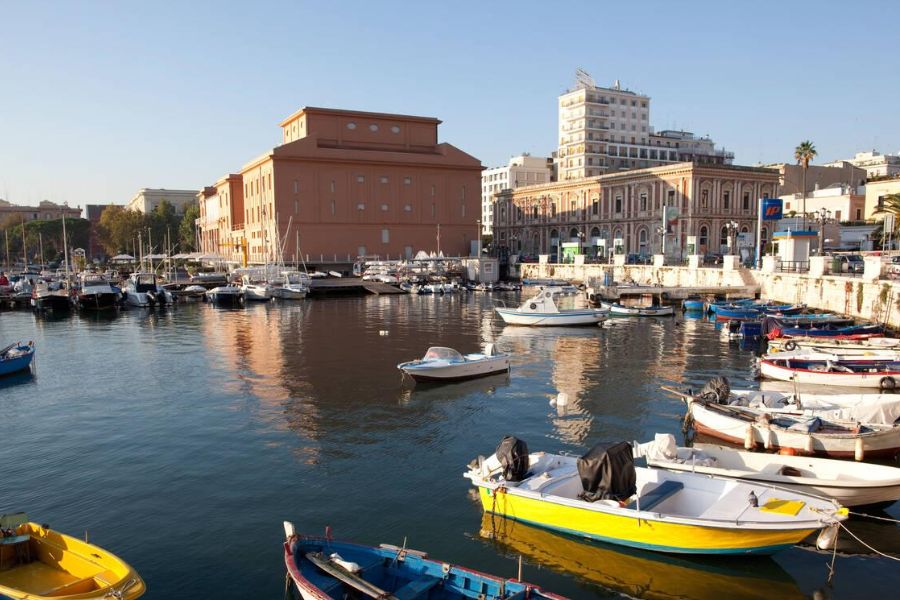
Lately, crackdowns on unlicensed pasta selling have threatened the grandmothers’ routines. Tourism brings both good and bad changes. Still, watching these women teach their skills to visitors and chat with neighbors, you see how food traditions tie the community together in this magical corner of southern Italy.
The Living Heritage of Bari Vecchia
Every time I walk through Bari Vecchia’s narrow, twisting streets, I’m reminded how this ancient quarter holds onto traditions that have shaped southern Italian life for centuries.
The old city pulses with its own rhythm. Here, ancient customs slip naturally into daily routines.
Daily Life in the Old City
Bari Vecchia really wakes up in the mornings. I love watching the elderly women set out their wooden boards and roll semolina dough into orecchiette.
Their hands move so quickly—it’s almost hypnotic. Years of practice show in every movement.
These “pasta grannies” have become icons of Bari’s cultural identity. They greet travelers with big smiles, never missing a beat as they keep up their daily pasta production.
Fishermen return to port at dawn, bringing in the day’s catch for the markets. I’ve had some of my favorite seafood chats right here, as locals passionately debate the best cooking methods.
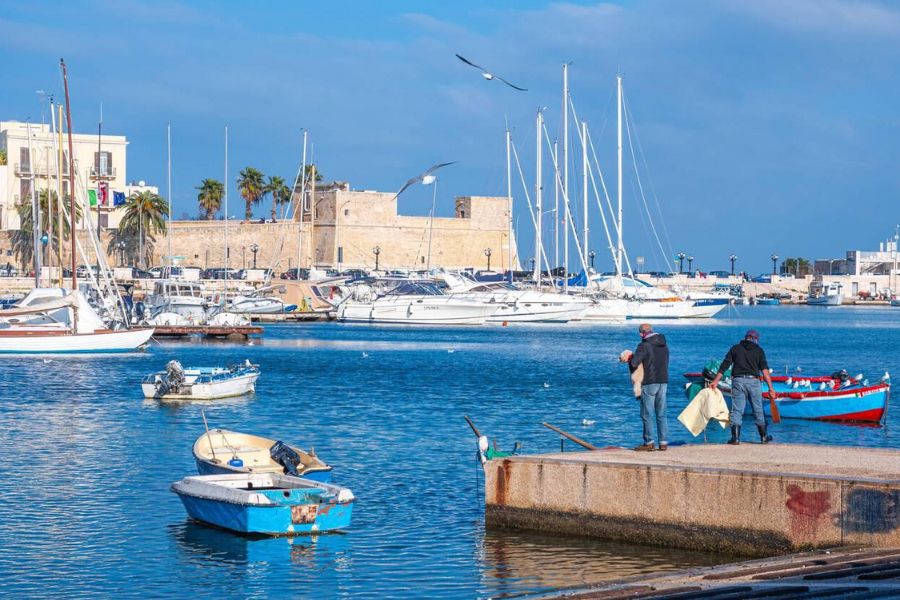
Kids play in the piazzas and neighbors shout greetings from their balconies. This social fabric has barely changed, even as more tourists arrive.
Historical Layers and Traditions
Bari Vecchia sits on Roman foundations, with a street layout that’s basically a maze—narrow alleys, sudden little squares, all designed back in medieval times to keep out sea invaders.
The Basilica of San Nicola stands at the spiritual core. I’ve seen crowds of pilgrims from all over Europe and Russia gather here during the feast days in May.
Food traditions here are all about making do with what’s around. Dishes like:
- Tiella barese: layers of rice, potatoes, and mussels
- Riso, patate e cozze: rice, potatoes, and mussels, but in another style
- Sgagliozze: fried polenta squares you can buy on the street
The Adriatic influences everything—what people eat, how they talk, even their jokes.
Language and Local Dialect
The Barese dialect instantly connects you to Bari’s past. It’s not standard Italian at all—it’s got bits of Greek, Arabic, Spanish, and French mixed in.
You might hear, “Ce steve a ffà?” (What were you doing?) as you wander around. I’ve found that even a few words in dialect open doors, especially with older folks.
There’s not a ton of material out there about Barese, but the Library of Congress has started recording native speakers to help preserve it.
People here talk with their hands as much as their mouths. Certain gestures mean everything from “I’m not sure” to “That food was amazing.”

If you drive just a few kilometers out of Bari, the dialect changes. It’s wild how isolated these communities stayed until pretty recently.
Pasta Grandmothers: Keepers of Culinary Secrets
Down the tight lanes of Bari Vecchia, pasta grandmothers keep old traditions alive with their hands and wooden boards.
These women aren’t just making dinner—they’re preserving a piece of Italian culinary history with every batch of pasta.
Orecchiette: The Signature Shape
Orecchiette, those “little ears” of Bari, are more than just food. They’re a symbol of local identity.
I sat and watched as elderly women shaped the dough with lightning speed, their thumbs making perfect little indentations. Some of these grandmothers have been doing this on the same street for over sixty years!
The recipe is simple: just semolina flour and water, no eggs. That means your technique has to be spot-on. Each grandmother has her own way of doing things—a unique touch passed down through her family.
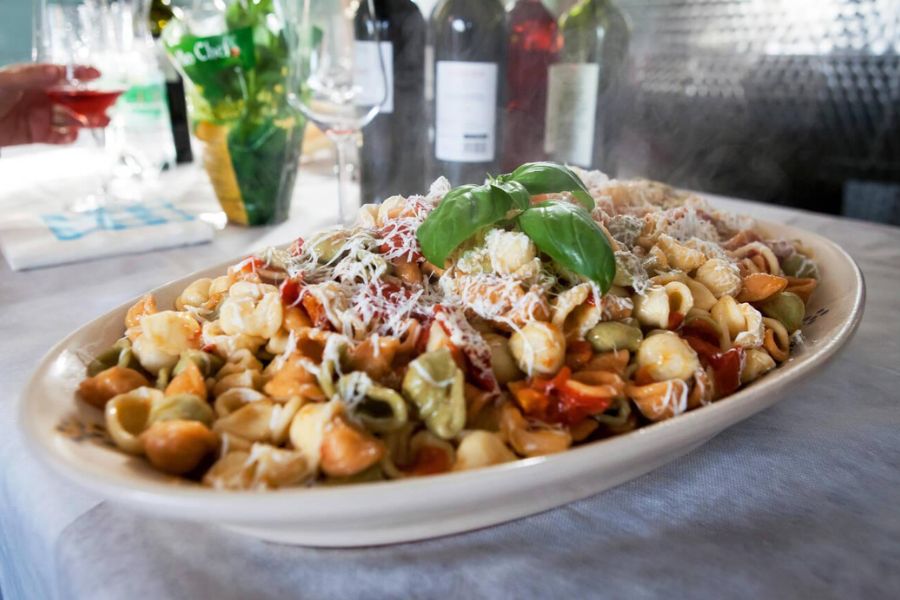
Tourists love snapping photos of these women, and some have even become social media stars. Despite all the attention, they stay humble and keep doing what they’ve always done.
Street Pasta-Making Rituals
On Strada dell’Arco Basso—locals call it “Orecchiette Street”—I watched the daily pasta-making ritual turn ordinary sidewalks into open-air cooking schools.
You see wooden boards lining the doorsteps as grandmothers set up their stations in the morning sun.
There’s a buzz of conversation as hands work the dough. This isn’t just about food—it’s about community. Neighbors swap gossip and check each other’s pasta for quality.
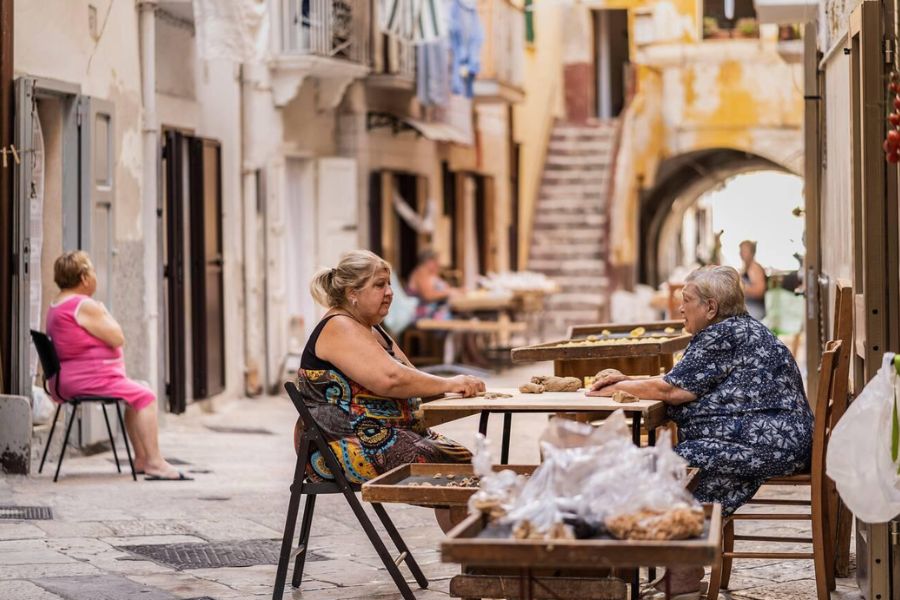
Lately, worries about “contraband” homemade pasta have stirred up trouble. Local officials worry about food safety, but residents push back, defending their heritage. It really shows just how deeply pasta-making is woven into Bari’s identity.
Intergenerational Cooking Lessons
The best moments happen when grandmothers teach the younger generation. I watched a nonna guide her granddaughter, gently correcting the pressure needed to get the orecchiette just right.
“Not too thin, not too thick,” she said. These lessons go way beyond recipes—they’re about patience, pride, and skill.
Some grandmothers now offer classes to visitors. For around €50, you can learn the basics and leave with both new skills and great stories. A few have even published simple ebooks sharing their techniques and family tales.
Young people face a choice: keep these traditions going or let them fade. Lately, more young women seem to realize how valuable these skills are and work to keep them alive.
Fishermen and the Waters of the Adriatic
When I stroll along Bari’s harbor at dawn, I see the deep connection between the city’s fishermen and the Adriatic Sea.
These men keep alive traditions that have shaped this coastal community for generations. Their families have passed down fishing techniques for years.
Sunrise at the Harbor
The harbor wakes up before sunrise as fishing boats head out to sea.
I love watching the fishermen prep their nets, chatting in Barese dialect that bounces off the water.
Look at their hands—calloused, strong, and steady. You can tell they’ve spent a lifetime working with the sea. Some still use traditional methods, even as new technology creeps in.
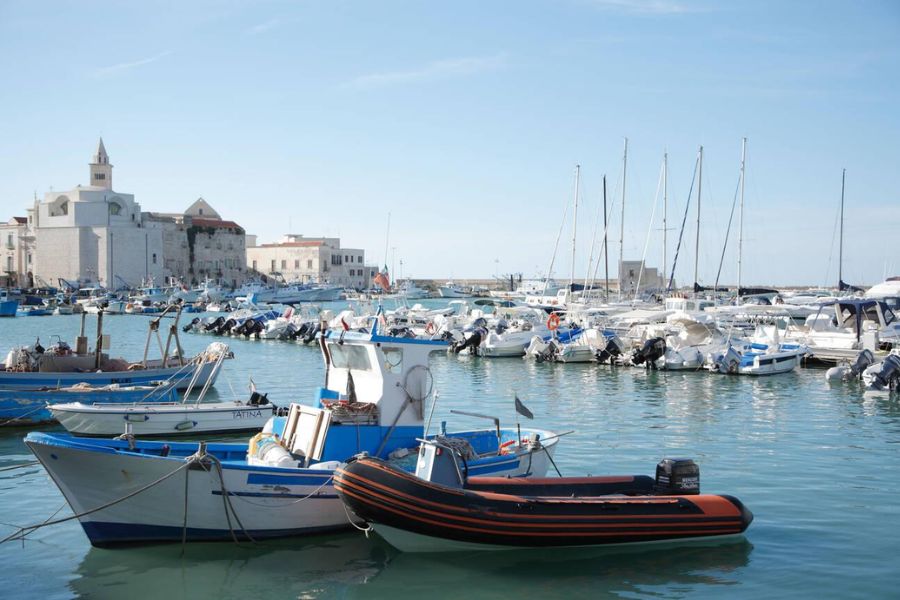
Early mornings, I’ve overheard lively arguments between crew members about strategy. They mix practical know-how with old superstitions about weather and fish—stuff their grandfathers probably believed, too.
Family Boats and Fishing Traditions
Most fishing boats in Bari are family-owned, handed down from father to son. Dads teach their kids how to read the water, predict the weather, and fix their gear with care.
I’ve met a few fishing families who proudly show off photos of three generations on the same boat. One fisherman told me, “The Adriatic gives to those who respect it.” He explained how they use sustainable practices to protect their way of life.
By mid-morning, the catch comes back to port and heads straight to locals and restaurants. This direct approach keeps Bari’s seafood incredibly fresh.
What really strikes me is how these families manage to adapt to new regulations and environmental concerns, but still stick to the core practices that define who they are.
Experiencing Bari Vecchia: Travel Tips and Guided Adventures
Exploring Bari Vecchia’s narrow streets gives you a real taste of traditional Italian life. The ancient district hides its best secrets, but you’ll find them if you know how to look—and if you’re willing to chat with locals.
Walking Tours and Local Guides
Walking tours turned out to be the best way for me to get to know Bari Vecchia’s hidden corners.
Local guides share stories you just won’t find in any guidebook. Most tours last two or three hours—just enough to get your bearings when you first arrive.
If you want something extra special, check out “People of Bari” tours. They’ll connect you with real residents who lead small groups through winding alleyways, right past grandmothers making orecchiette in their doorways.
Some tour companies offer convertible mini-car options for folks who can’t walk as much. These little cars squeeze down narrow streets, so you don’t miss out.
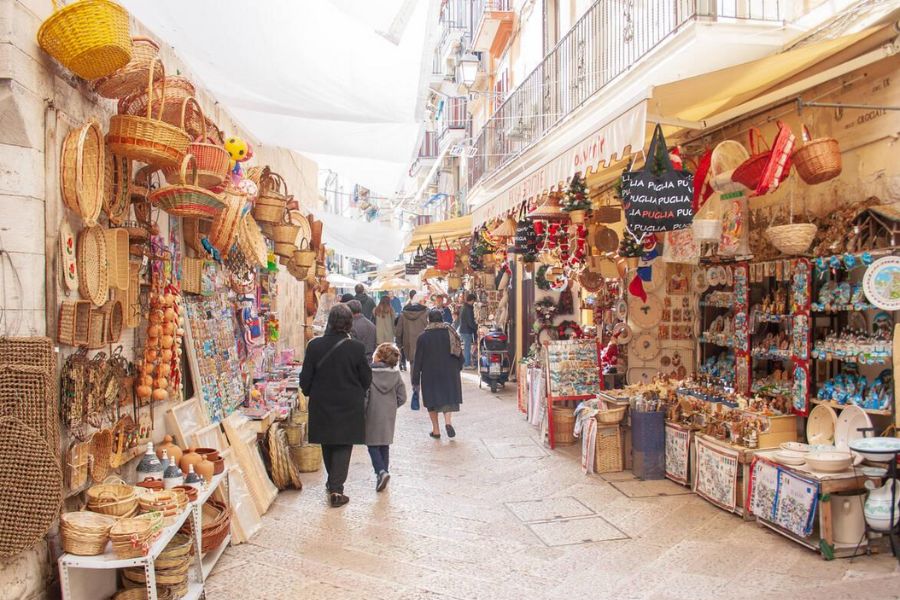
Expect to pay €25-50 per person for group tours. Private guides cost more, but you get a tailored experience.
Authentic Food Markets
The Mercato di Santa Scolastica is buzzing every morning.
I usually get there around 8 AM, just as fishermen unload their catch and produce vendors stack up colorful veggies.
Many vendors hand out samples—don’t be shy about trying before you buy. Keep an eye out for:
- Fresh seafood (get there before 10 AM for the best selection)
- Local cheeses like burrata and caciocavallo
- Seasonal veggies for classic Pugliese dishes
For a deeper dive, some groups offer market tours with cooking classes. You’ll shop with a local chef and then learn to make regional specialties in a traditional kitchen.
Accessibility and Local Etiquette
Bari Vecchia’s medieval streets are narrow and cobbled—definitely wear comfortable shoes and skip the wheeled luggage.
If you have mobility issues, you’ll find the main piazzas easier to navigate than the tightest alleys.
A few Italian phrases go a long way. I found that just saying “buongiorno” (good day) and “grazie” (thank you) made locals warm up.
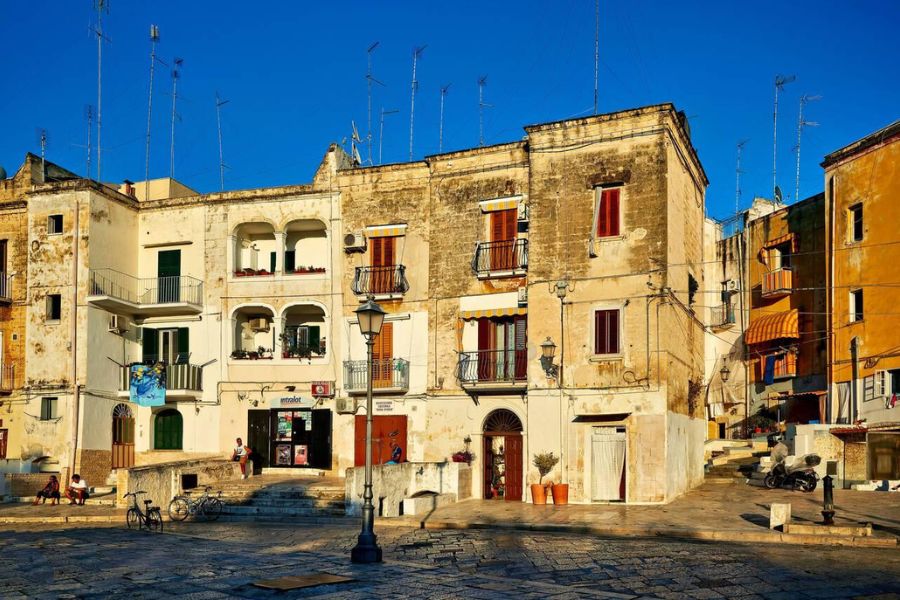
People here move at their own pace. Shops close for riposo (afternoon rest) between 1-4 PM. Dinner rarely starts before 8 PM, so plan accordingly.
Cultural Connections: Bari Vecchia and the Italian Mosaic
Bari Vecchia isn’t some isolated outpost—it’s a vibrant thread in Italy’s cultural tapestry. The old town’s traditions connect to other Italian cities, but still keep that unmistakable Puglian flair.
Links to Venice, Bologna, and Florence
Wandering Bari Vecchia’s lanes, I sometimes think of Venice’s intimate passageways. Both cities share a deep relationship with the sea, shaping their daily life and food.
Bari’s fishing traditions remind me of Venice, but with a clear southern twist.
Bologna’s love for pasta matches Bari’s pasta culture. Where Bologna has tortellini and tagliatelle, Bari has orecchiette. I’ve watched grandmothers in both cities work dough with the same respect and careful technique.
Florence’s artistic touch shows up here, too. Many Barese artists traveled north to study and brought Renaissance ideas back home. You can see this in Bari Vecchia’s baroque churches—a blend of northern style and local stonework.
Music, Poetry, and the Arts
Bari’s music scene mixes folk and classical. On summer nights, you still hear serenades echoing through the streets—especially for courtships or big celebrations.
Opera means a lot here. The Petruzzelli Theater, just outside the old quarter, draws in locals who keep the opera tradition alive.
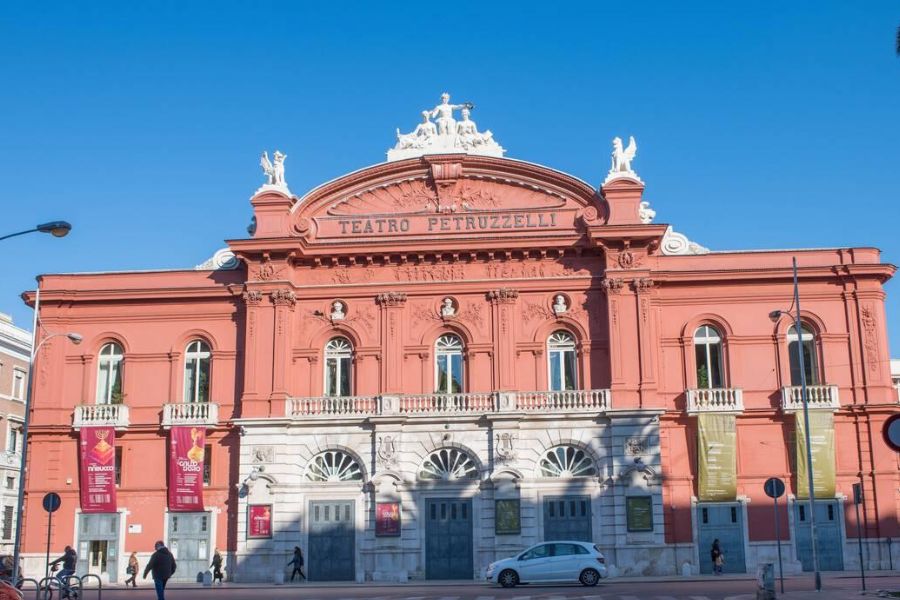
Poetry in Barese dialect captures everyday life’s rhythm. Local poets gather in small cafés, sharing verses that blend Italian tradition with their own unique flavor. I once stumbled into a poetry night and felt the language wrap around the neighborhood’s spirit.
Festivals and Social Gatherings
During the feast of San Nicola in May, Bari Vecchia bursts into celebration. Residents of all ages join processions, enjoy music, and share meals that spill out into the streets.
Summer evenings bring neighbors together for food and stories. Sometimes, music breaks out—usually with a tamburello drum.
I’ve joined in the “tavolata” tradition, where families set up long tables in the alleyways for communal meals. These gatherings build community and show off Bari’s culinary pride. The air fills with laughter, conversation, and the clink of glasses as locals welcome visitors into their world.

